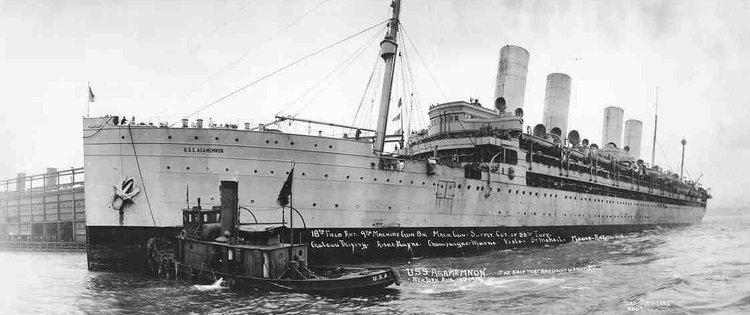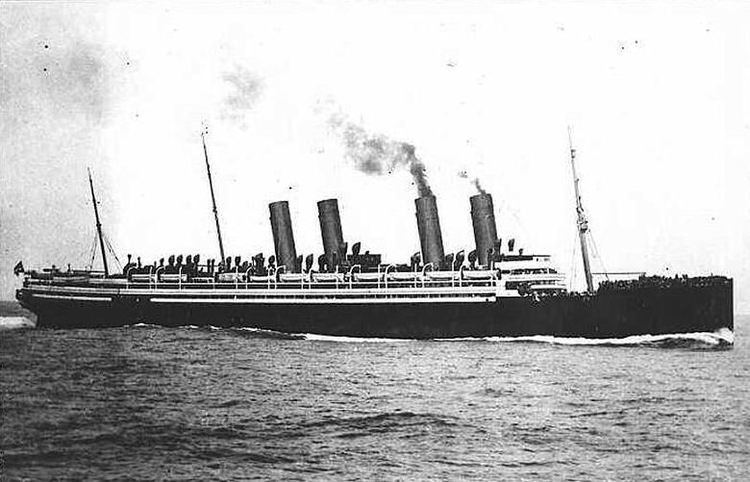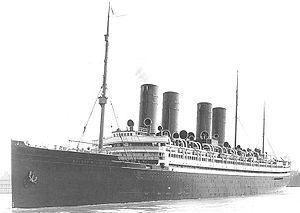Name Kaiser Wilhelm II Port of registry Germany Launched 12 August 1902 Beam 22 m | Length 215 m | |
 | ||
Namesake Wilhelm II, German Emperor Builder AG Vulcan, Stettin, Germany | ||
The second SS Kaiser Wilhelm II, named for the German Emperor, was a 19,361 gross ton passenger ship built at Stettin, Germany, completed in the spring of 1903. The ship was seized by the U.S. Government during World War I, and subsequently served as a transport ship. A famous photograph taken by Alfred Stieglitz called The Steerage, as well as descriptions of the conditions of travel in the lowest class, have conflicted with her otherwise glitzy reputation as a high class, high speed trans-Atlantic liner.
Contents

German career

Designed for high speed trans-Atlantic service, Kaiser Wilhelm II won the Blue Riband for the fastest eastbound crossing in 1904. In the years before the outbreak of World War I, she made regular trips between Germany and New York, carrying passengers both prestigious (in first class) and profitable (in the much more austere steerage). Kaiser Wilhelm II was west-bound when war with Britain began on 4 August 1914 and, after evading patrolling British cruisers, arrived at New York two days later.
United States military service

She was seized by the U.S. Government when it declared war on Germany on 6 April 1917, and work soon began to repair her machinery, sabotaged earlier by a German caretaker crew, and otherwise prepare the ship for use as a transport. While this work progressed, she was employed as a barracks ship at the New York Navy Yard.

The U.S. Navy placed the ship in commission as USS Kaiser Wilhelm II (ID-3004) in late August 1917. Her name was changed to Agamemnon at the beginning of September and active war work commenced at the end of October, when she left for her first troopship voyage to France. While at sea on 9 November 1917, she was damaged in a collision with another large ex-German transport, USS Von Steuben (ID-3017), but delivered her passengers to the war zone a few days later. Following her return to the U.S. in December and subsequent repair work, Agamemnon again steamed to France in mid-January 1918 and thereafter regularly crossed the Atlantic as part of the effort to establish a major American military presence on the Western Front. The routine was occasionally punctuated by encounters with real or suspected U-boats and, during the autumn of 1918, with outbreaks of influenza on board.
In mid-December 1918, just over a month after the Armistice ended the fighting, Agamemnon began to bring Americans home from France. She made nine voyages by August 1919, carrying nearly 42,000 service personnel, some four thousand more than she had transported overseas during wartime. USS Agamemnon was decommissioned in late August and turned over to the War Department for further use as a U.S. Army Transport. Laid up after the middle 1920s, she was renamed Monticello in 1927 but had no further active service. Monticello was considered too old for future use and sold for scrap in 1940.
